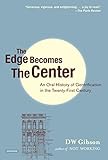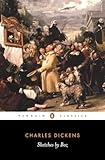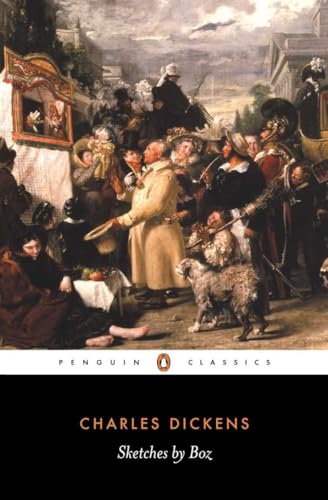
Houses built of brick may withstand a wolf’s breath, but their walls can be altered forever by the forces of gentrification. In London, such forces are changing the landscape — and the people — at a nearly unprecedented rate. A recent article in The Independent reports that “London’s share of the most deprived neighbourhoods in England has almost halved in the past decade” as residents of those places find themselves increasingly unable to pay rent and forced to relocate to the suburbs. In their absence, cheap flats become lavish hotels; local hangouts are converted into upscale hair salons.
 The effects of gentrification on the lives and well-being of those who struggle to hang on to their homes have been explored in several recent book-length accounts, including DW Gibson’s The Edge Becomes the Center: An Oral History of Gentrification in the 21st Century. In a 2015 interview, Gibson explains why oral histories, more than, say, academic treatises, move readers to seriously consider the topic: “I think the way you get people to care about gentrification is to write about human beings.” If oral histories help us to better understand the social realities of gentrification by allowing communities to speak about their own experiences, novels lend unique insight by telling us the things that aren’t always spoken aloud.
The effects of gentrification on the lives and well-being of those who struggle to hang on to their homes have been explored in several recent book-length accounts, including DW Gibson’s The Edge Becomes the Center: An Oral History of Gentrification in the 21st Century. In a 2015 interview, Gibson explains why oral histories, more than, say, academic treatises, move readers to seriously consider the topic: “I think the way you get people to care about gentrification is to write about human beings.” If oral histories help us to better understand the social realities of gentrification by allowing communities to speak about their own experiences, novels lend unique insight by telling us the things that aren’t always spoken aloud.
In her first novel, The Bricks That Built the Houses, Kate Tempest examines the thoughts and feelings — spoken and hidden — of a group of 20-somethings from two interconnected, lower-middle-class families in South East London, one of the fastest gentrifying areas of the city. As their neighborhood changes, so do the laws of “making it” that their parents believed in. Working hard, going to college, saving money — in the old days, before the arrival of the moneyed class, these things were believed to guarantee a secure future. Now, they might not even lead to secure employment. So what to do when life’s familiar scripts are remodeled as thoroughly as the local pub? How to get ahead?
 Tempest’s millennial protagonists are not the destitute tramps that George Orwell described in Down and Out in Paris and London. They are well-educated and beautiful, the products of parents who aren’t rich but who managed to sock away enough earnings to feed and clothe their children when saving-up was still possible. Race often forms a component of gentrification. But in this novel, Tempest doesn’t dwell on the subject — the characters are racially and ethnically ambiguous in a way that feels intentional. The three main characters’ lives weave together in complicated ways. Pete went to college, but couldn’t find work afterward. He lives with his parents and spends his days hunting for temp work. He falls in love with Becky, a beautiful dancer estranged from her “born-again” mother. Becky doesn’t know her father, a political radical jailed for sexually assaulting under-age girls. What she does know is that she’s always wanted to be a dancer, but classes are expensive. She earns money by giving massages, the kind with happy endings. Learning about her work nearly breaks Pete apart. But what he doesn’t understand, says Becky, is that her clients — mostly depressed, wealthy Londoners — look at her with a respect and gratitude that she rarely sees in the eyes of casting directors. As her relationship with Pete grows increasingly tense, Becky finds solace in Harry, Pete’s sister, who is gay. Harry makes her living selling drugs, cocaine mostly, to CEOs and entrepreneurs, rich folks who can afford to spend the occasional evening giving London’s seedy underbelly a tickle. Like Becky, Harry knows her line of work is not without risks, but it pays well, and she needs the money to achieve her own dream of opening a bar.
Tempest’s millennial protagonists are not the destitute tramps that George Orwell described in Down and Out in Paris and London. They are well-educated and beautiful, the products of parents who aren’t rich but who managed to sock away enough earnings to feed and clothe their children when saving-up was still possible. Race often forms a component of gentrification. But in this novel, Tempest doesn’t dwell on the subject — the characters are racially and ethnically ambiguous in a way that feels intentional. The three main characters’ lives weave together in complicated ways. Pete went to college, but couldn’t find work afterward. He lives with his parents and spends his days hunting for temp work. He falls in love with Becky, a beautiful dancer estranged from her “born-again” mother. Becky doesn’t know her father, a political radical jailed for sexually assaulting under-age girls. What she does know is that she’s always wanted to be a dancer, but classes are expensive. She earns money by giving massages, the kind with happy endings. Learning about her work nearly breaks Pete apart. But what he doesn’t understand, says Becky, is that her clients — mostly depressed, wealthy Londoners — look at her with a respect and gratitude that she rarely sees in the eyes of casting directors. As her relationship with Pete grows increasingly tense, Becky finds solace in Harry, Pete’s sister, who is gay. Harry makes her living selling drugs, cocaine mostly, to CEOs and entrepreneurs, rich folks who can afford to spend the occasional evening giving London’s seedy underbelly a tickle. Like Becky, Harry knows her line of work is not without risks, but it pays well, and she needs the money to achieve her own dream of opening a bar.
Tempest’s novel is remarkable not only for its timely commentary on the financial difficulties faced by many millennials, but for its meticulous examination of parents’ inability to understand their children’s struggles. In a series of flashbacks, we witness Pete and Harry’s mother, Miriam, fall in love with husband one and then husband two, the latter who was able to give her the middle-class lifestyle she had always dreamed of. That Miriam managed to marry up colors her perception of her boyish-looking daughter: if she could do it, why can’t Harry? (Miriam is also convinced that women can’t be gay.) Pete and Harry’s step-father, David, talked his way into an entry-level position at an optician’s, eventually saving enough money to buy the shop outright. If he could do it, why not Pete, with his college degree?
From Miriam and David, Harry and Pete inherit feelings of perpetual failure. As for Becky, we watch her mother give up a promising career in photography to cater to her husband, only to be left with nothing when he goes to prison. She passes on to Becky her shame, self-loathing, and wariness of intimacy. Tempest gets at foundations: If families are houses, then each family member is a cracked brick, the damage growing wider and less structurally sound the farther it travels from its origin point.
The novel spans several months, but opens with the moment that those months lead up to — the friends are in a car, getting the hell out of town. We don’t know why they’re running until the climax, but finding out the plot specifics isn’t necessarily the point. This isn’t a mystery novel, or a thriller, really. It’s a study of economics and generational differences, of how a parent’s success can become a child’s anxieties and vice versa.

 It’s also a character study. Drug-fueled and facing terrible decisions, Tempest’s protagonists share traits with those in the more rural-set works of John Brandon’s Citrus County and Denis Johnson’s Jesus’ Son. But there is no one quite like Pete, Becky, and Harry. The richness of their inner lives develops largely from Tempest’s startling use of metaphor. Here she describes Becky’s exasperation as she listens to a pompous music-video director wax on endlessly about a shoot in Indonesia: “Becky’s heart punches itself out of her chest and runs screaming through the room, smearing blood all over the walls. She looks down, bemused and studies the new hole in her chest.” The passage exemplifies the tendency toward exaggeration the millennial generation is so often accused of demonstrating, while also capturing exactly the feeling of wanting to flee a deadening conversation.
It’s also a character study. Drug-fueled and facing terrible decisions, Tempest’s protagonists share traits with those in the more rural-set works of John Brandon’s Citrus County and Denis Johnson’s Jesus’ Son. But there is no one quite like Pete, Becky, and Harry. The richness of their inner lives develops largely from Tempest’s startling use of metaphor. Here she describes Becky’s exasperation as she listens to a pompous music-video director wax on endlessly about a shoot in Indonesia: “Becky’s heart punches itself out of her chest and runs screaming through the room, smearing blood all over the walls. She looks down, bemused and studies the new hole in her chest.” The passage exemplifies the tendency toward exaggeration the millennial generation is so often accused of demonstrating, while also capturing exactly the feeling of wanting to flee a deadening conversation.
Tempest’s skillful eye for description extends, perhaps, from a well-trained ear for the spoken word. Until recently, she has published as a poet and playwright and has toured as a rapper. On paper, her prose often slips into streams of consciousness that brim with internal rhyme schemes. Consonants resonate through neighboring vowels, as if she’s making song. Her longer descriptions are interspersed with staccato-like phrases, echoing the frantic stop-and-go movement of thoughts through a coke-addled brain. This might be Tempest’s first novel, but it’s also poetry.

 Writers taking on gentrification are nothing new, of course. In his 1836 Sketches of Boz, Charles Dickens laments that the “old tottering public house” has been “converted into spacious and lofty wine-vaults.” One hundred seventy years later, David Mitchell captures Worcestershire’s vivid class contrasts in the semiautobiographical Black Swan Green. But The Bricks That Built the Houses offers a particularly elegiac take by revealing the strength of the ties between a city and its people, no matter how strained those ties have become. “It gets into your bones,” reads the novel’s first line, a reference to the hostile but familiar London the friends are leaving behind. By artfully intertwining the stories of people who are broken by the city they love, The Bricks That Built the Houses creates a complex narrative that rarely falters and eventually coheres into a strong and lyrical whole.
Writers taking on gentrification are nothing new, of course. In his 1836 Sketches of Boz, Charles Dickens laments that the “old tottering public house” has been “converted into spacious and lofty wine-vaults.” One hundred seventy years later, David Mitchell captures Worcestershire’s vivid class contrasts in the semiautobiographical Black Swan Green. But The Bricks That Built the Houses offers a particularly elegiac take by revealing the strength of the ties between a city and its people, no matter how strained those ties have become. “It gets into your bones,” reads the novel’s first line, a reference to the hostile but familiar London the friends are leaving behind. By artfully intertwining the stories of people who are broken by the city they love, The Bricks That Built the Houses creates a complex narrative that rarely falters and eventually coheres into a strong and lyrical whole.




